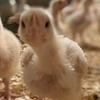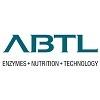Check out what is new in Poultry Industry
Find the best technical articles, forums, and videos on Poultry Industry at Engormix. Enter now and interact with the world's largest agricultural social network.
1. Introduction It is well known that the major cost in poultry farming is feed, representing 70% of the total production costs [1]. In order to reduce this cost, the research has recently focused on exploring and evaluating new sources of raw materials from agricultural and industrial by-products for use as animal feed. Key benefits of this practice include lower dependence of animal production on human consumed seeds and reduced waste management costs [2]. Around 2.1 million tons...
Comments : 0
Recommendations: 1
The 2026 International Production & Processing Expo (IPPE) is less than six months away and has surpassed 629,000 square feet of exhibit space and secured more than 1,130 exhibitors. It is the largest trade show floor ever in IPPE's history, and there is more to come!
As the only annual exposition highlighting the best...
Comments : 0
Recommendations: 0
The veterinary APIs market is experiencing stability with prices across most categories showing minimal fluctuations and a gradual absorption of channel inventories. Key products like doxycycline, neomycin sulfate, and erythromycin thiocyanate have sustained steady prices attributed to factory maintenance and restricted order policies. However, certain sectors are encountering sustained price pressures due to the gradual introduction of new production capacities. Market activities are...
Comments : 0
Recommendations: 0

Andrew Vignati from VICAM breaks down key strategies to detect and manage mycotoxins in feed ...
Comments : 0
Recommendations: 0
.jpg&w=3840&q=75)

Chinese: A fat digestion and absorption enhancer for feeding monogastric species
Suggested link
1. Introduction Aggressive behavior of roosters toward hens are rare in natural environments, where the two sexes form separate social hierarchies and male dominance is expressed in a passive manner [1–3]. However, it has been observed that males from broiler parental lines exhibit a high frequency of aggression toward females, especially during the display of sexual behavior [4–13]. This pattern of mating-related aggression has also been observed in slow-growing broiler...
Comments : 0
Recommendations: 0
Managing flies in poultry farms is crucial for maintaining flock health, ensuring optimal productivity, and protecting public health. Flies thrive in poultry environments due to the availability of manure, spilled feed, and warm, humid conditions. To address this issue, it is essential to adopt a multi-faceted approach that incorporates changes in nutrition, management, water use, environment, and pest control strategies. Understanding the Fly Problem in Poultry...
Comments : 0
Recommendations: 0
Welcome Donna Hoang to Liptosa!
We are excited to introduce Donna Hoang, a veterinarian and our new Vietnam Country Manager at Liptosa! Donna will be leading our operations in Vietnam, focusing on the development and management of projects in this key market.
With her veterinary...
Comments : 0
Recommendations: 2
.jpg&w=3840&q=75)
Discover how GAA enhances energy metabolism in broilers, improves growth, and spares costly ingredients like arginine and fats. Learn why it's more efficient than L-arginine and how it supports better performance and cost savings in poultry diets. ...
Comments : 1
Recommendations: 3
Advanced Bio-Agro Tech Ltd. (ABTL) and the Agharkar Research Institute of the Maharashtra Association for the Cultivation of Science (Department of Science & Technology, Government of India) have entered into a strategic research agreement.
This pioneering initiative will...
Comments : 0
Recommendations: 2
1. Introduction The global population is projected to reach 9.7 billion by 2050, driving a significant increase in food and feed demand and the urgent need for alternative protein sources [1]. Currently, soybean meal is a crucial protein source in poultry and livestock diets due to its high-quality protein composition. However, sustainability concerns, including deforestation, monocropping, and biodiversity loss, as well as the environmental impacts of conventional crop systems such...
Comments : 0
Recommendations: 1
Walking on eggshells - assessing anxiety in chickens Extension collaborative for the poultry industry -Attention bias...
Comments : 0
Recommendations: 0
Introduction Animal welfare pertains to the quality of life of an animal, denoting the cumulative positive and negative experiences of an animal 1 . The welfare of farmed animals impacts their development and productivity, shaping both...
Comments : 0
Recommendations: 1
In poultry farming, worms and protozoa represent the two primary classes of internal parasites that impact bird health, welfare, and productivity. While indoor-reared poultry typically avoid infestation from worms that require intermediate hosts, free-range birds are more susceptible. Interestingly, broilers tend to...
Comments : 0
Recommendations: 0
Enrichment is the process of improving the environment of an animal, to meet their behavioral needs and ultimately improve their welfare. Enrichment helps to reduce stress and improve welfare by providing physical and mental stimulation, encouraging highly-motivated species specific behaviors, allowing the animal more control over their...
Comments : 0
Recommendations: 0
.jpg&w=3840&q=75)

Introducing Afla-V ONE: Safe, Sustainable Aflatoxin Detection for Complete Feeds and Pet Foods
Suggested link
.jpg&w=3840&q=75)
Dr. Badal Singh shares insights into the grain crisis, feed cost strategies, and the future of poultry farming in India, Nepal, and Sri Lanka. With decades of expertise, he highlights the role of innovative solutions, AI, and modern practices in overcoming industry challenges and boosting performance....
Comments : 0
Recommendations: 2
.jpg&w=3840&q=75)
Naveen Sehgal, owner of Acorn Marketing, shares insights on overcoming challenges in North India’s layer market. He discusses rising raw material costs, promising egg prices, and the role of technology in driving innovation. With a focus on collaboration and expanding egg consumption, he offers advice for fostering growth and success in India's poultry industry....
Comments : 0
Recommendations: 2
.jpg&w=3840&q=75)
Shamith Cutinha, Executive Director of Provit Foods, discusses tackling India’s poultry challenges, from consumer shifts to a cutting-edge processing plant in Mangalore. Learn how Ideal Chicken leads with quality, sustainability, and a growing retail footprint in Karnataka and Kerala....
Comments : 0
Recommendations: 2
1. Introduction Poultry constitutes the second most widely produced and eaten type of meat in Europe, its consumption being especially notable in some countries, such as England, Ireland, Portugal, Spain and France [1]. It is expected that in 2024, there will be a marked increase in the production and consumption of fresh poultry meat worldwide, representing 3.5% more than in 2023 and 4.4% more than in 2022 [2]. In recent years, great efforts have been made to reduce the...
Comments : 0
Recommendations: 0
This issue will cover: -What are behavioral needs? -What is dustbathing? -Dustbathing in commercial housing systems Substrate...
Comments : 0
Recommendations: 0
Housing systems for laying hens in the United States (and more broadly across the world) are transitioning away from conventional cages to cage- free systems....
Comments : 1
Recommendations: 0








.jpg&w=3840&q=75)








.jpg&w=3840&q=75)













